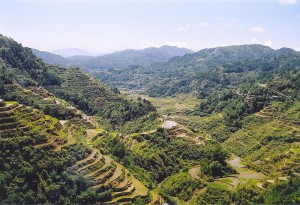The Rice Economies
The Rice Economies
Â
By Francesca Bray
Â
Basil Blackwell Ltd 1986
Â
Â
Â
Just as any study of Vietnam in some way begins with Chinese written sources, any understanding of Vietnam must begin with rice. And the book on rice I started with is Francesca Bray’s The Rice Economies. Bray is not a great stylist or anything, but she is concise and interesting enough to hold my attention. Now, I must own up to be the kind of person who experiences great joy at the prospect of a short (but thorough) book on a major grain. I read with rapt attention the New Yorker articles on the world’s major food crops published decades (I assume, but it may be years) ago. In narrating the history of rice she narrates the history of all the civilizations it fed and gave rise to. She takes you to the dry, upland fields in Shan Burma and to the Mekong Delta where 19th Century technology made poldered fields and hence, drainage, possible in environments where it wasn’t before. She gives you rice in all of its varieties, long, medium, short, sweet and glutinous, japonica or indica. Her bibliography alone is a cornucopia of obscure and moving works relating to risiculture. We are treated to vanished inland empires, civilizations that rise to construct elaborate irrigation systems, maintained by corvee labour, only to fall apart into isolated, sedimented networks of paddy fields ruled over by petty chieftans.
Â
Bray wrote the volume on agriculture for Joseph Needham’s god-like endeavor, The History of Science and Technology in China:
so this volume is her brief epoch, her Milton not her Jerusalem.
Â
She begins her story of rice with petrified grains and pollen found in archaeological sites in South China and a broad swath of mountainous terrain stretching from Assam to Hanoi, and ends with the super crop devised in the Philippines and disseminated by American Agri-bureaucrats. (I have omitted her notes in the following).
Â
“The origins of domesticated Asian rice are still undetermined, but the distribution of wild rices…suggest a centre, or centres, of domestication somewhere in the piedmont zone of Assam, Upper Burma and Thailand, Southwest China and Vietnam. There is linguistic and ethnographic evidence to suggest that the earliest staple foods grown in monsoon Asia were tuber crops and millets…The earliest archaeological finds of domesticated rice to date come from China…[and]…has been carbon-dated to about 5000 BC; the sheer volume of rice remains shows that the villagers were not proto-farmers but relied heavily on cultivated rice as a food supply….
Â
“…Gorman suggests that the domestication of rice began in naturally marshy areas in upland Southeast Asia about 9,000 years ago and that, as their skills improved, early rice-farmers were able to occupy non-marshy sites….Such an hypothesis seems consistent with the evidence from China and Thailand, and from Vietnam, where wet-rice cultivation was established in the red River Delta by the mid-third millennium BC or perhaps earlier….â€
Â
The Natural Characteristics of Rice:
Â
“Rice is by nature a swamp plant, and by far the greatest number of varieties are grown in standing water, but there are also dry rices which are grown on steeply sloping hillside fields. Generally speaking, dry or hill rice varieties will not grow in wet fields, nor can wet rices be grown in upland fields….It has been suggested that dry-rice cultivation developed earlier than wet, on the grounds that the techniques involved are less complex, but most botanists reject this on morphological grounds. Hill rice can only be grown by systems of shifting cultivation and does not, therefore, provide a suitable base for the development of complex technical systems or of the related social and economic organizations….â€
Â
This is an elegant demonstration of materialist history, the poetry of fact.
Â
“Rice is an extremely adaptable plant, with an efficient system of air passages connecting the roots and the shoot which enables it to grow in dry upland soils, in irrigated fields, or along flooded river-beds. It is largely self-pollinated, but cross-pollination does occur…and a very large number of wild varieties exists.â€
Â
Like so much in the story of Vietnam (like its language) and Southeast Asia in general, rice is not easily categorized:
Â
“Among the Asian domesticated rices, Oryza sativa, two sub-species are commonly distinguished, indica and japonica, both of which include glutinous and non-glutinous varieties…..The contrasts which most immediately strike the non-specialist are that indica rices have longer, more slender grains which usually remain separate when cooked, while japonicas have shorter, rounder and more translucent grains which quickly become slightly sticky….But some Asian rices, notably those of Indonesia, do not seem to conform to either category, and in 1958 a third sub-group named javanica was proposed to designate the bulu and gundil varieties of Indonesia.
Â
“In China both indica and japonica varieties have been grown since Neolithic times. The earliest Chinese dictionary, the Shuowen jiezi of AD 100, was the first work to contain the terms geng and xian which have been used to designate japonica and indica rices in Chinese ever since.â€
Â
“Rice has a number of advantages compared with many other food crops. First, it is very palatable, and is the only cereal which can simply be boiled and eaten without disintegrating into mush.â€
Â
The wide variety of rices (the ripening period varies from 90 to 260 days!) allows poor farmers to spread their risk out by planting different types. Some varieties ripen quickly with light rain, others take a longer period of time. Moreover, in tropical climates it is possible to get 2 or 3 crops a year. Farmers can assist each other in the harvest as different paddies reach maturity at different times, and in the off-season work to keep irrigation ditches and canals in good repair. Rice agriculture as it has been practiced over the millennia has not only encouraged cooperative labour practices but also sound organic practices: “If the field is continuously planted with wet rice its fertility, unlike that of dry fields, will not diminish over time even if few or no fertilizers are used, for the nutrient content of the irrigation water, together with the nitrogenising power of the naturally occurring algae, are sufficient to maintain regular returns from traditional rice varieties.†And it is also versatile: sometimes rice paddies are drained for part of the year and planted with wheat, vegetables or tobacco.
Â
I spent some time in Asia in the early eighties and saw plenty of rice paddies. In Bali our boiled drinking water was drawn directly from the irrigation canals and the bottom layer of each bottle had a sludge of dead insects. There is a story told in some book that in the 50’s agricultural experts persuaded Balinese peasants to abandon their traditional cultic methods of planting and harvesting rice (the ritual calendar determined every stage of agricultural production) and adopt modern, scientific methods. Their yields declined. What the experts failed to notice was that Balinese ritual encoded millennia of empirical data for the planting and maintenance of wet rice agriculture.
Â
Wet rice agriculture is one of the great, monumental achievements of human beings. At its height, the Chinese system was an integrated organic social construct: fish, ducks and water buffalo (used for ploughing) nourished the paddies with their manure and kept them free of insects. Mulberry trees retained the walls and provided silk. Peasants could eat the ducks and paddy fish. It was a self-sustaining system, the intentional creation of humans working over generations at selecting varieties, developing small hand operated pumps and water wheels, at organizing labour, at maximizing yield without destroying the environment.
Â
On that trip to Asia I visited one of the rice marvels of the world, the Ifugao rice terraces of northern Luzon. They were built by people 3,000 years ago out of stone. The terraces hug emerald mountains in concentric bands that mirror the sky and sun. To gaze from a height into a valley of these terraces was to be lost in the vertiginous vision of fused geometric form and organic function. Moreover, the Ifugao live in a remote and rugged part of northern Luzon, accessible only by foot. The villagers at that time were badly degraded, humiliated by all the horrors of the modern world without the benefits. The Ifugao were warriors and hunters, but alas, there were no more wars and nothing to hunt. Women did most of the work while men watched the children in villages made of stone paths and walls with traditional thatched huts on stilts. The most depressing thing of all was entering a village of several hundred people only to discover that 4 different christian sects and their pernicious missionaries were warring over the souls of people with their own gods and beliefs, who had tilled the land starting a thousand years before christ was a whisper in mary’s ear.
I have only quoted a little from The Rice Economies. But as I have suggested, the book is rich in content and moves beyond the analytical description of rice and the history of risiculture towards the sociology of rice and how the rice economies have features unique to them that are of more than historical interest. Rice both supported and required large populations and this affected the technologies, techniques, and social structures of rice based civilization. Problems that had technological solutions in the west had sociological ones in the east. It is a cliché that the west and east are fundamentally different, and this cliché has spurred from the earliest days of contact an interest, a fascination in the west with what is perceived to be a superior civilization in China, India and Japan. Whether it is The Art of War, Zen and the Art of Motorcycle Maintenance, The Tao of Physics or Dharma Bums, whether it is Leibnitz or Emerson, Plato, Alexander, Marco Polo or Macrobiotics, the Japanese Way of management, the Kama Sutra, or the Baghavad Gita quoted in the first bloom of nuclear war, we have gone to the east for compensatory wisdom, and found it. The story of rice is fraught with the story of tyranny and I don’t think we will discover virtues on the other side of the Urals and Himalayas that are not to be found here. But as a practical matter, the conservative land based civilizations of Asia have preserved until recently one of their many great accretative monuments, just as we have done here with the scientific revolution, and that is Rice Agriculture as an environmental, economic, social and spiritual phenomenon. Food is the spirit, and how that food is produced and consumed feeds the daily toil of life in every way. Today, after so much else in all of our worlds has fallen to the for-profit-only guillotine, the rice paddies remain, but they are embattled. Bray’s book tells this story much better than I can.
Â
So, how does all this relate to Vietnam? All in good time, all in good time.
Â
For more about rice, go here: http://ricewisdom.org/
Â
Â




